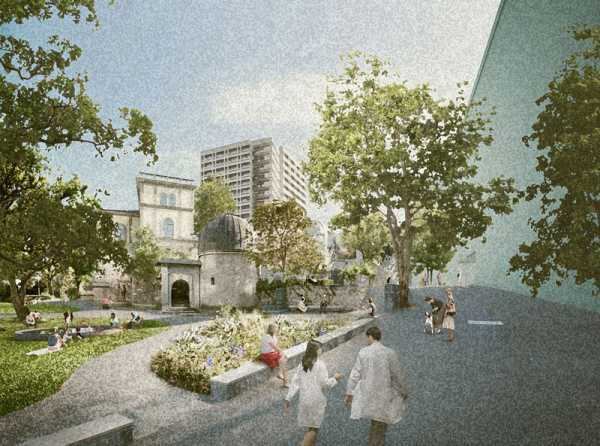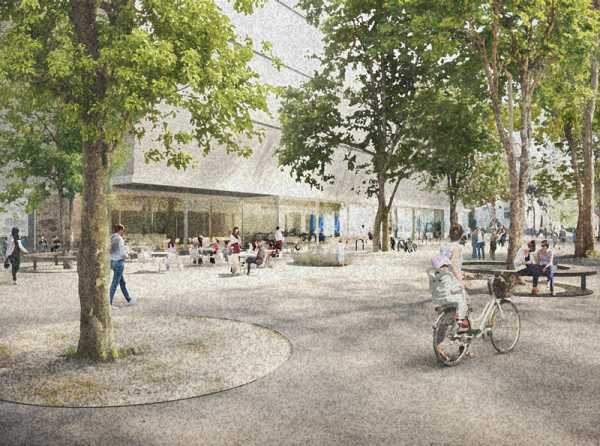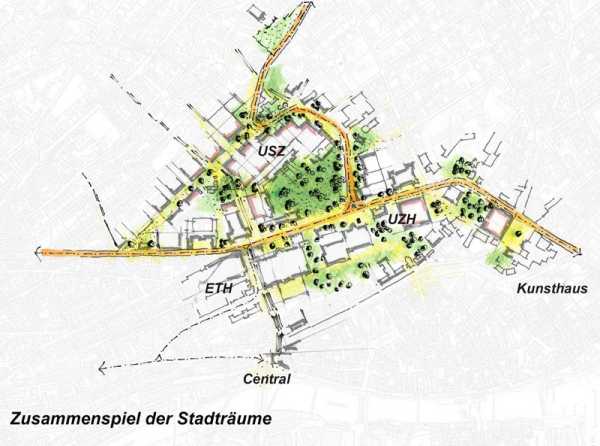An opportunity for the university district and ETH Zurich
Zurich’s central university district continues to take shape. A joint press conference was held today by the canton and city of Zurich, University Hospital, the University of Zurich and ETH Zurich to provide information on the planning status. This follows the decision by the cantonal Committee for Planning and Construction (KPB) to transfer management of the structure plan to the broader Cantonal Parliament. What does the overall plan mean for ETH Zurich?

The spatial requirements for teaching, research and medical care have changed. Consequently, modern infrastructure is a major reason why the canton, city, University Hospital, the University of Zurich and ETH Zurich have joined forces to plan Zurich’s central university district. Over the course of 2016, the five project partners have reduced the areas and heights of the new buildings, further developed the transport concept and commissioned a study on the urban space.
In the next stages of planning, the interplay between the buildings and the public space will be considered across the entire area, with particular attention to green and open spaces, pathways, increased openness and transport.
This week, the Cantonal Parliament's Committee for Planning and Construction unanimously approved the partial revision of the cantonal structure plan, Gebietsplanung Hochschulgebiet Zürich Zentrum. In the next phase, the Cantonal Parliament will evaluate the planned development of the university district and decide on the cantonal structure plan, which lays out the long-term principles of the spatial development.
For an open university and hospital district
“A diverse and open university and hospital district reinforces Zurich's identity as a university city. It encompasses modern and historic buildings, meeting areas, open spaces and transport solutions that work,” says Ulrich Weidmann, who is Vice President Human Resources and Infrastructure and responsible for property management at ETH Zurich.
The proposed changes to the structure plan give ETH Zurich a long-term development perspective for the centre. More specifically, they make it possible to use the unique proximity of University Hospital, the University of Zurich and ETH Zurich for new developments in the medical field at the interfaces between natural sciences, engineering and medical sciences.
“We want to consolidate our existing locations to facilitate direct encounters between students and researchers across faculties and institutions and to share infrastructures, thus fostering creativity, innovation and an exchange between disciplines,” says Ulrich Weidmann.
Development at two locations
ETH is focusing its overall development on two locations in the Zurich region, with plans for most new buildings at the Hönggerberg campus. In the years ahead, the new development plans for the university district will focus on the Schmelzberg site on Sternwartstrasse.
Over the next decade, a new building for teaching, research and cooperation in medicine will be built at the site. A cantonal design plan is being developed for this purpose. This approach aligns with that of University Hospital and University of Zurich and facilitates the overall site planning. Cantonal design plans include the planning regulations for property owners (e.g. heights, use, development).
ETH Zurich does not currently have any concrete new development plans in other parts of the university district or for the Oberstrass area, which is part of the university district planning covered in the structure plan: It also has no plans currently or in the coming years for new buildings on Sonneggstrasse and Clausiusstrasse. From the university's point of view, this area offers a particularly long-term development opportunity for the departments located there (Mechanical and Process Engineering, Earth Sciences, and Humanities, Social and Political Sciences).
ETH Zurich’s planning and construction projects are primarily focussed on the needs of teaching, research and knowledge transfer. “We are also aware that we have historic city and district structures in Zurich's central university district. Sustainable planning therefore includes versatile buildings, which can be easily adapted to new, scientific trends, and public spaces that are welcoming to members of the university and the public at large,” says Ulrich Weidmann.
Returning space for housing
Nor is ETH Zurich proactively buying up property or apartments in the districts. Rather, it is giving back the housing space that it uses. ETH reached an agreement with the city of Zurich to return around 7,600m2 of housing space by 2025. Up to now, it has given back around 2,000m2 of floor space in federally owned properties and over 8,000m2 of floor space in rental properties.
Some 2,700m2 of floor space in federally owned properties will remain to be returned into housing by 2025. “ETH Zurich is freeing up housing space so that we can contribute to the quality of life in the neighbourhood and because apartments are ill-suited to university operations.”
ETH Zurich also sees its commitment to sustainable mobility as contributing to the university district. This includes participating in transport planning throughout the district, which is based on public transport as well as pedestrian traffic and cycling. ETH is also taking independent action; for example, by testing a more frequent schedule of the ETH Link commuter bus connecting the Hönggerberg campus to the city centre campus and planning of comprehensive mobility management are currently in the works.
In the future, ETH can also contribute to relieving congestion through operational measures such as staggered lecture times and video conferencing. Today, 97 percent of ETH members come to the university district by public transport, bicycle or on foot.
Images of Zurich's future central university distric





Comments
No comments yet